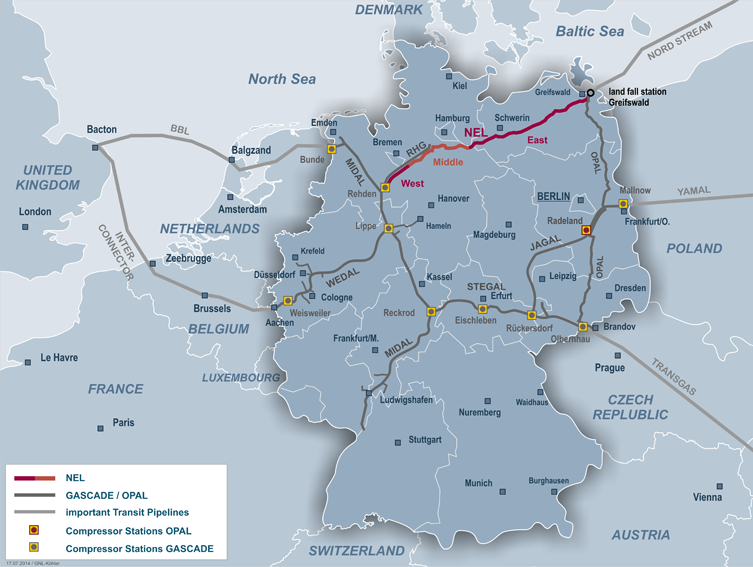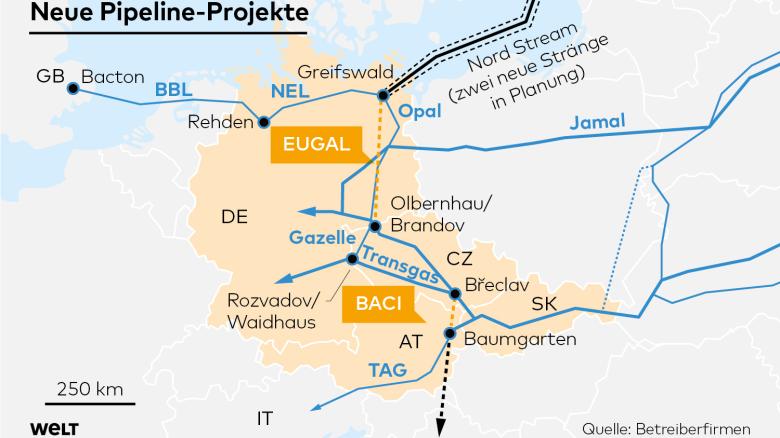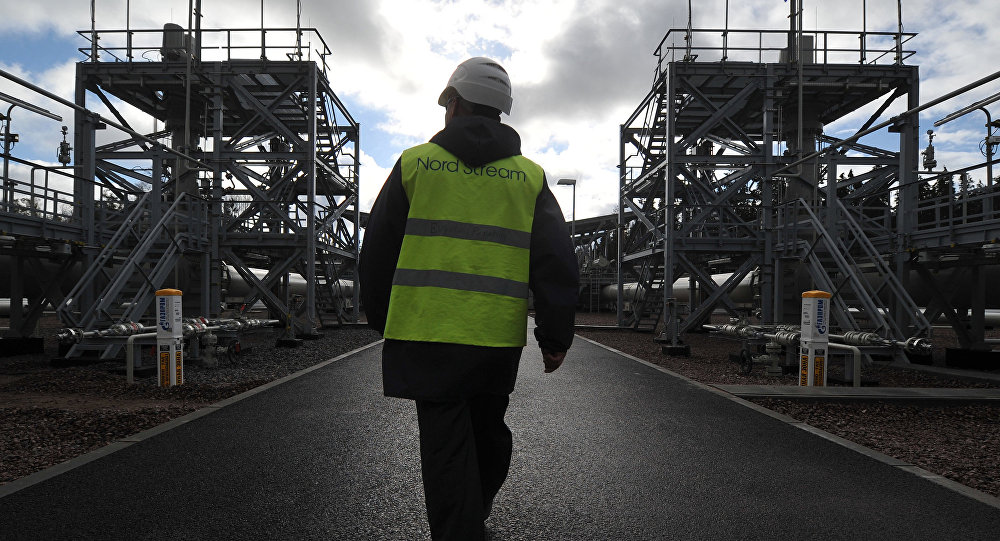
After the Ukrainian crisis, many experts had incorrectly predicted that Gazprom would start a gas war with Europe over the last winters. Nevertheless, that did not happen, as the tactic would not have paid off at a time when the Russian giant should defend its European market-share from growing competition.
In general, from both a market and PR perspective, a more efficient tool than cutting off the gas supplies is flooding the markets to block the competition. This move could be part of the upcoming price war for the European gas market, where Gazprom will compete against alternative suppliers like the United States and Norway, but as well with other countries, which Poland eyes as future gas suppliers.
In October 2015, I wrote about the Polish government’s concerns that, in case of a supply emergency situation, Poland would not be able to tap into the German gas market. This concern stems from the fact that the German gas storage Katharina has precedence over other supply obligations, which might decrease the transfer capacity at such degree that it would make it impossible to deliver gas to Poland via the Yamal pipeline. This example shows that a real alternative for Poland is the diversification of supply projects, such as the LNG terminals, and the connection to Norwegian gas deposits. However, even this strategy might be at risk because of the Russian plan of flooding the European markets with gas.
Nord Stream may send its gas to Central and Southern Eastern Europe through EUGAL and BACI
The Nord Stream 2 pipeline is supposed to double the transfer capacity of Nord Stream1, the existing Baltic gas pipeline between Russia and Germany, from 55 to 110 billion cubic meters (bcm). The Nord Stream 1 is connected to OPAL and NEL pipelines. The OPAL (Ostsee-Pipeline-Anbindungsleitung) pipeline runs from the Baltic Sea through Western Pomerania, Brandenburg and Saxony to the German-Czech border, has an annual capacity of 36 bcm, and connects Nord Stream 1 with JAGAL and STEGAL pipelines. The JAGAL pipeline is linked to Yamal pipeline, whereas STEGAL connects the Czech and Slovakian pipeline systems and transport the Russian gas to the MIDAL pipeline. The NEL(Nordeuropäische Erdgasleitung ) pipeline starts near Greifswald and runs westwards, towards the border with Netherlands, to Achim, reaching Rehden, where it connects to Rehden-Hamburg gas pipeline; it has an annual capacity of 20 bcm.
Currently, 50-70% of the Nord Stream 1 available capacity is used, but the promoters of Nord Stream 2 have been assuming that the pipeline’s capacity will be increased. So far, that has not occurred, as the third-party access (TPA) and unbundling requirements of the Third Energy Package have prevented Gazprom to get full access to Nord Stream 1, OPAL and NEL. Gazprom and its partners applied for exemptions for both OPAL and NEL pipelines, but only OPAL was granted an exemption for 50% of its capacity.
Due to these restrictions, Gazprom’s exclusive capacity transfer via OPAL is limited to 17.5 bcm. This halts the company’s expansion across the region. Without these constrains related to capacity usage, and by taking advantage of the fall in the oil prices and further concessions on pricing, Gazprom could offer attractive prices, which might turn its potential clients away from the Norwegian gas or the LNG supplies. Poland wants to offer this alternative to the region, but if Gazprom manages to overcome the aforementioned restrictions, it could neutralize the Polish plan.

Source https://www.nel-gastransport.de/en/our-network/
The Russian giant might have found a way to tackle the thorny issue of capacity restrictions. Gazprom reached out to its German partners, who suggested a joint pipeline project that was announced in April 2016. The EUGAL gas pipeline would start in Wierow, near Greifswald, where Nord Stream 1 ends and where Nord Stream 2 will end as well. The nearly 485 km-long pipeline will run from Mecklenburg (Western Pomerania) and Brandenburg to Southern Saxony and from there to Deutschneudorf, on the German-Czech border. The constructors stressed out that it will run mainly alongside the existing OPAL pipeline. The pipeline will have two branches and additional pressure will be ensured by a new compressor in Brandenburg. The project developer is GASCADE, which operates JAGAL, STEGAL, MIDAL and Rehden-Hamburg pipelines; this company is, along with the other two companies which operate OPAL and NEL pipelines, a subsidiary of WIGA Transport company, a joint venture established by BASF-Wintershall and Gazprom. Though, it is worthy of mention that, through the assets swap with BASF, operated in October 2015, Gazprom is the whole shareholder of GASCADE. Therefore, it could be assumed that EUGAL, despite being technically a separate project, will be used by Gazprom to increase the capacity between Nord Stream and the Czech Republic.
EUGAL may be an effective tool in helping bypassing the European regulations on capacity restrictions on one hand and in increasing the transfer of Russian gas to the Central European market, but also to the South Eastern Europe, on the other hand. The constructors of the EUGAL pipeline revealed that 51 bcm of the gas will be annually transmitted to the Czech Republic and from there, considering the high volume, it will reach other connected markets. EUGAL’s first branch will be put into operation in 2019, and the second branch, a year later. It is worth mentioning that the assumptions of the EUGAL projects may be revised, as its promoters could give it up, if the European Commission would agree to grant and exemption for the OPAL’s entire capacity. Also, it is worth reminding that the mega pipeline project South Stream, which was supposed to supply the Eastern and Southern European markets, was supposed to have a capacity of 63 bcm a year, whereas EUGAL’s will be 62 bcm. It is question mark whether this similarity is only a coincidence. The stakeholders expect that 11 bcm of gas from the new pipe to be sold in Poland- which almost matches the country’s yearly natural gas imports (approximately 10 bcm). This clearly confirms the concerns expressed the Polish government and the CEOs of public companies that the gas from Nord Stream 2 is supposed to conquer our market and block its energy diversification.
Sources revealed that the German regulatory office Bundesnetzeagentur (Federal Network Agency) asked the EC to review its agreement with Gazprom. The Agency wants the permission to transfer at least a third of the Nord Stream’s gas that arrives at Greifswald to the Czech Republic via the Brandow point. This element enhances the aforementioned hypothesis: Gazprom wants to sell its gas in the Czech Republic and, from there, to the Central European market, and very likely, to the South Eastern Europe. Part of the gas will be sold at auctions, to which Gazprom and its subsidiaries could participate as well.
There is an alternative to EUGAL if the Commission would take a more flexible position on the Nord Stream 2 project. One could assume that this issue was discussed during a meeting between Germany’s Minister of Economy and Energy, Sigmar Gabriel, with the EU Commissioner for Energy and Climate Action Miguel, Arias Cañete, held on May 17, 2016. In this regard, it should be mentioned that the Commission had promised to announce its position on Nord Stream 2 after consultations with Bundesnetzeagentur. The exact date has not been revealed, but Gabriel might have lobbied for exempting the NS2 from the Third Energy Package’s provisions, as he openly supports energy cooperation with Moscow and is one of the vigorous promoters of Nord Stream 2. Thus, the Russians have room for manipulation – they can either use OPAL’s full capacity or half of EUGAL’s. They can sell gas to intermediaries in Greifswald, or give access to Nord Stream 2 to their ‘rivals’ – Novatek and Rosneft. Hence, further expansion of Russian gas in the Central and Eastern European markets may take place in accordance with the EU law.
Another direction for the Russian gas is Austria, and the Central European Gas Hub in Baumgarten. The Bidirectional Austria-Czech Interconnector (BACI), which is an EU’s Project of Common Interest, will connect the Austrian and Czech markets, and, using also the gas storage capacities from Austria and the Czech Republic, could send the gas to the neighboring markets (Slovakia, Hungary, Slovenia, Croatia, Poland, and others). Nevertheless, once connected to the Nord Stream’s system of pipelines, BACI may become part of the North-South Corridor, which would connect Russia and its gas to the Central and South-Eastern markets.

Source: http://www.welt.de/wirtschaft/energie/article154039970/Nord-Stream-offenbart-eine-seltsame-Naehe-zu-Russland.html
Attempting to dislodge the Central and Eastern countries’ opposition to Nord Stream 2
In this regard, it should be recalled that the prime ministers of the Czech Republic, Estonia, Hungary, Latvia, Poland, Slovakia and Romania and the president of Lithuania addressed to Jean- Claude Juncker a letter against the Nord Stream 2. The document claims that the project would generate “potentially destabilising geopolitical consequences”, as it would endanger the energy security of Central and Eastern Europe and would heavily affect the gas transit route via Ukraine. But Russia has been deploying serious endeavours in splitting out the opposition-block to the Nord Stream 2, made up so far by the Central and Eastern Europeans countries. Therefore, the Russian Economic Development Minister declared on May 24, after a meeting with his Slovak counterpart, that Moscow is ready to ensure Slovakia’s interest in gas transit revenues and the gas transit contract with this country will run until its end, in 2028. Furthermore, he lured to Slovakia the possibility of earning more gas transit revenues if the gas from the Nord Stream 2 would go, via Austria, to Slovakia, Hungary and the Balkans. At the same time, the Russian Foreign Minister, Sergey Lavrov, held talks with his Hungarian counterpart, on May 25, during which it was discussed the implementation of the Paks-2 project, which would only make Budapest more energy interdependent of Moscow, as currently the Paks nuclear plant produces more than 40% of Hungary’s electricity. Hence, it might not came as surprise the statement made by the Hungarian Foreign Minister, who declared that the EU is using double standards regarding Nord Stream 2.
Promotion of new alternative for Russian gas deliveries to Central, Eastern and Southern Europe encompasses a highly political goal, as well. It can further undermine the solidarity within the EU, make Central and Eastern countries to soften their critique towards Nord Stream 2, and jeopardize the overall goals of the Energy Union. In this way, the Russian gas, after having conquered the German and Austrian markets with the Nord Stream pipelines, can re-conquer Central, Eastern and Southern Europe by using Nord Stream 2 and/ or EUGAL and BACI. Gas curtain may fall over our region again. The region’s energy diversification might be undermined by shortsighted and particular interests of the countries involved in the new Russian strategy. In this context, the Northern Gate, the LNG terminals in Poland and the Norwegian project, are not a challenge to the German gas hub as one could assume, but rather an emergency exit to regional diversification efforts. This is a race against time. If the diversification plans are quicker than the implementation of Nord Stream 2, they might be able to protect the region from full saturation of the Russian gas. At that point, it may also start the planning for a regional gas hub that could be used by the Eastern and Southern countries. If Nord Stream 2 wins and the diversification plan fails, the region will say “goodbye” to an active and diversified gas policy and will merely become a passive consumer of Russia’s gas.
Wojciech Jakóbik is energy analyst and Editor in Chief of BiznesAlert


